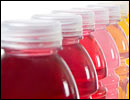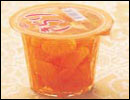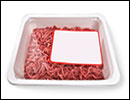
Convenience food packaging changed our lives
By Canadian Packaging Staff
General aseptic case-ready convenience food packaging DuPont Awards for Packaging Innovation Hot Fill MAP Microwave Packaging modified atmosphere packaging re-closable oackaging reclosable recycled content Retort value-addedDuPont packaging survey results revealed at 25th DuPont Awards for packaging innovation.
WILMINGTON, Del.—Recloseable packaging and microwaveable plastic trays were named top packaging breakthroughs that most impacted peoples’ lives over the past 25 years in an on-line survey hosted by DuPont, with just those two categories of invention capturing 48 percent of the votes of its 25th DuPont Awards for Packaging Innovation.
The online survey was available to industry professionals from April 9 – May 10, 2013.
Recloseable packaging, which includes food-storage zipper locks and stand-up pouches, earned 27 percent of the votes. Microwaveable meals, enabled by oven-able packaging materials, captured 21 percent of the votes. Recycled content in consumer, industrial and community programs that support social goals earned 18 percent of the votes.
“Over the 25 years, the DuPont Awards for Packaging Innovation has attracted a wide variety of truly innovative packaging developments, making this anniversary event the perfect time to honor those past achievements,” says Shanna Moore, leader/of the DuPont Packaging Awards program. “In reflecting back on these breakthroughs, it’s hard to imagine what everyday life would be like today without them.”
DuPont created the voting project after reviewing hundreds of past winners and identifying six breakthrough groups that impacted our lives. Descriptions of those breakthroughs—which range from packaging that has enabled our current on-the-go lifestyle to centralized processing and packaging of meat that reduced waste and kept meat fresh longer.
Invention 1 – Hot Fill
 Did you enjoy juice from an unbreakable plastic bottle this morning? Or perhaps the applesauce or ketchup bottle you dropped in the kitchen bounced instead of breaking. Thank PET (Polyethylene terephthalate) bottles capable of handling hot fill. And celebrate innovators like Ocean Spray, S.A. des Eaux Minerals d’EVIAN and Seneca Foods Corp. for embracing the opportunity. Today there are fewer injuries as a result and significantly lower energy needed to transport food around the world.
Did you enjoy juice from an unbreakable plastic bottle this morning? Or perhaps the applesauce or ketchup bottle you dropped in the kitchen bounced instead of breaking. Thank PET (Polyethylene terephthalate) bottles capable of handling hot fill. And celebrate innovators like Ocean Spray, S.A. des Eaux Minerals d’EVIAN and Seneca Foods Corp. for embracing the opportunity. Today there are fewer injuries as a result and significantly lower energy needed to transport food around the world.
PET bottles for hot-fill allow us to have juice, energy drinks, and other food products packaged in plastic. These plastic bottles are much safer than the original glass bottles which were prone to breakage. This is especially significant for products handled by children such as ketchup. The first PET bottles for hot-fill featured thick panels on the walls of the bottles that prevented distortion as the bottles and their contents cooled down. Over the years, companies were able to eliminate both the label crinkling and the heavy panels.
The light-weight PET bottles are shock-resistant, which protects the product from external impact and allows the product to be transported and distributed to other areas easier. The lower cost PET bottles contribute to a wider variety of food/drinks being offered in supermarkets. These bottles are also easily recyclable.
Invention 2 – Retort and Aseptic Techniques
 Love them or hate them, shelf-stable foods that don’t need refrigeration helped enable an on-the-go lifestyle. Campbell’s in 1986 was the first to capture a packaging award for adopting flexible, sterile packaging and using it to provide microwavable prepared soup that can be heated and served in one container. These techniques quickly evolved and today they play an even more powerful role in food safety and security by extending the shelf life of food to reduce waste and ensuring nutritious food can reach remote areas without spoiling.
Love them or hate them, shelf-stable foods that don’t need refrigeration helped enable an on-the-go lifestyle. Campbell’s in 1986 was the first to capture a packaging award for adopting flexible, sterile packaging and using it to provide microwavable prepared soup that can be heated and served in one container. These techniques quickly evolved and today they play an even more powerful role in food safety and security by extending the shelf life of food to reduce waste and ensuring nutritious food can reach remote areas without spoiling.
Retort and aseptic packaging enable an on-the-go lifestyle. Originally, tin cans or glass were used, but retort/aseptic packages allow consumers to have the same results with flexible pouches or cartons. These packages are more convenient—lighter, easier to prepare, microwaveable, and allow the consumer to eat food away from home. Unlike their glass counterparts, aseptic/retort packages are shelf-stable and do not need to be refrigerated. Consumers have a greater selection of food available with little effort required. The packages maintain their material integrity and protect the products from contamination (light, moisture, oxygen or microbes) during handling, processing and transport.
Invention 3 – Microwave Revolution
 Remember pre-heating the oven and waiting for prepared frozen meals to cook? Freezer-to-fork microwaveable meals in minutes—not hours—were enabled by oven-able materials. In 1986 Campbell’s—with CPET (crystalline Polyethylene terephthalate) trays that replaced aluminum—took the first award for this category. Twenty five years and billions of saved BTUs later, the industry is striving to make trays lighter, less expensive and even more sustainable.
Remember pre-heating the oven and waiting for prepared frozen meals to cook? Freezer-to-fork microwaveable meals in minutes—not hours—were enabled by oven-able materials. In 1986 Campbell’s—with CPET (crystalline Polyethylene terephthalate) trays that replaced aluminum—took the first award for this category. Twenty five years and billions of saved BTUs later, the industry is striving to make trays lighter, less expensive and even more sustainable.
The invention of ovenable materials, like those used in CPET trays, changed how consumers eat pre-prepared frozen meals. The original frozen meals were packaged in metal trays that had to be heated in the oven. With CPET trays, a tasty meal can be placed in the microwave providing a nutritious meal anytime – giving both time-savings and energy-savings as microwaves use only a fraction of the energy used by an oven.
Invention 4 – Case Ready/MAP/Value Add
 Once one realizes this invention refers to the process of either removing or replacing atmospheric air in a meat package with a protective gas to preserve meat, extend shelf life and protect against contamination, the value is clear. Meat stays fresh and safe as it is sealed from the moment it leaves federally inspected plants until opened at home. Since 1987, when Excel Corp. took home the first award in this category for case-ready beef, the process has expanded to include marinated, seasoned, and even bake-in-the-bag meats that can go straight from the refrigerator to the oven for a perfect home-cooked dinner.
Once one realizes this invention refers to the process of either removing or replacing atmospheric air in a meat package with a protective gas to preserve meat, extend shelf life and protect against contamination, the value is clear. Meat stays fresh and safe as it is sealed from the moment it leaves federally inspected plants until opened at home. Since 1987, when Excel Corp. took home the first award in this category for case-ready beef, the process has expanded to include marinated, seasoned, and even bake-in-the-bag meats that can go straight from the refrigerator to the oven for a perfect home-cooked dinner.
Compared to the traditional way of getting meat cut by butchers at grocery stores, case-ready meats are much safer. Case-ready meats are precut, prepackaged, and prelabeled at a central facility. Since these central packaging facilities undergo more safety scrutiny and are better equipped than grocery store butchers, the possibility of contamination is greatly reduced. This also eliminates a major step in the traditional two-step process, making processing more efficient—providing cost and labor savings to retailers.
Case-ready packaging maintains the quality of the meat and expands its shelf life. It lets consumers purchase the exact portion size needed and allows retailers to have a wider selection of meats available.
Invention 5 – Recycled Content
 1989 marked the year of the Exxon Valdez oil spill in Alaska, the dawn of the World Wide Web and the first in a long series of packaging innovation awards celebrating recycling efforts. The first went to Procter & Gamble for Spic & Span available in a bottle made 100 percent from post-consumer recycled PET (Polyethylene terephthalate) bottles. Over the years, the programs evolved to deal with industrial products, like agrochemicals, in programs that re-use the materials in high-value applications. And in 2012, an innovative project that supported a social program for low-income families in Brazil was honored.
1989 marked the year of the Exxon Valdez oil spill in Alaska, the dawn of the World Wide Web and the first in a long series of packaging innovation awards celebrating recycling efforts. The first went to Procter & Gamble for Spic & Span available in a bottle made 100 percent from post-consumer recycled PET (Polyethylene terephthalate) bottles. Over the years, the programs evolved to deal with industrial products, like agrochemicals, in programs that re-use the materials in high-value applications. And in 2012, an innovative project that supported a social program for low-income families in Brazil was honored.
The significance of the evolution of recycling is in the magnitude of its growth and in the innovation that took place to allow this to happen. Companies are continually developing new technology that focuses on material recycling, such as innovation that allows recycling of products that couldn’t have been recycled and reused before. Companies are also participating in the recovery of used packaging materials to make new packaging.
Invention 6 – Re-Closeable
 Before you skip past this one, take one minute to think about the last time you didn’t have a zipper lock on your food and your leftovers ended up in the trash. Then add the beauty of the stand-up pouch—for example, keeping nuts in the bag where they belong—and you can see how re-closeable has significantly reduced food waste and how Fisher Nuts & Fruits earned the first award in this breakthrough group.
Before you skip past this one, take one minute to think about the last time you didn’t have a zipper lock on your food and your leftovers ended up in the trash. Then add the beauty of the stand-up pouch—for example, keeping nuts in the bag where they belong—and you can see how re-closeable has significantly reduced food waste and how Fisher Nuts & Fruits earned the first award in this breakthrough group.
Zipper closures have changed how we reclose and store products. Instead of transferring food to a dish, we can either use the zipper on the package or put the food in a zip lock bag. This is a simple solution that is convenient for all age groups and reduces food waste. Zippers on packages provide a better air-tight reclose, reducing contamination and extending the shelf life of the product.
The DuPont Awards for Packaging Innovation are the industry’s longest-running, global, independently judged celebration of innovation and collaboration throughout the value chain. Their sponsor, DuPont Packaging & Industrial Polymers, manufactures an extensive mix of adhesive, barrier, peelable lidding and sealant resins and provides a globally networked development team to work with customers on packaging programs that help protect the product, environment, improve shelf appeal, convenience and reduce cost in the food, cosmetics, medical products and other consumer goods and industrial packaging industries.
For additional information about DuPont and its commitment to inclusive innovation, visit www.dupont.com.
Advertisement

